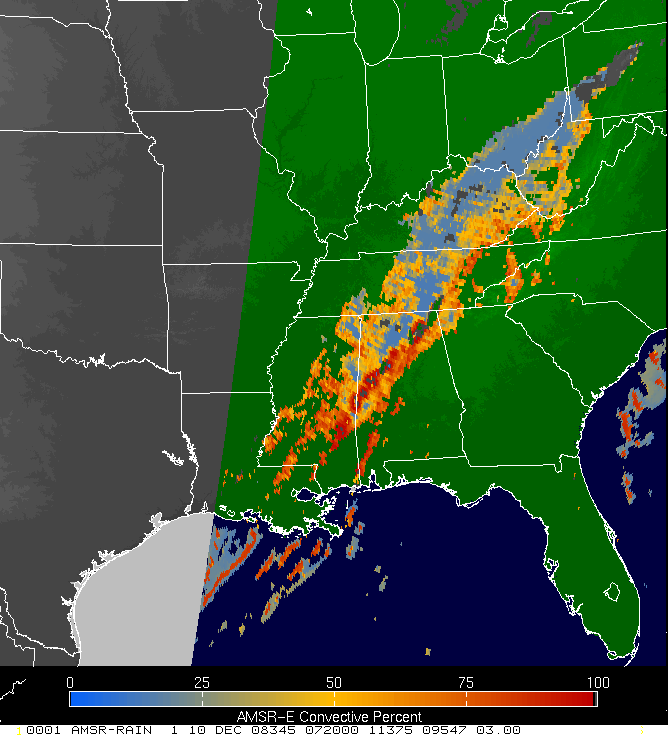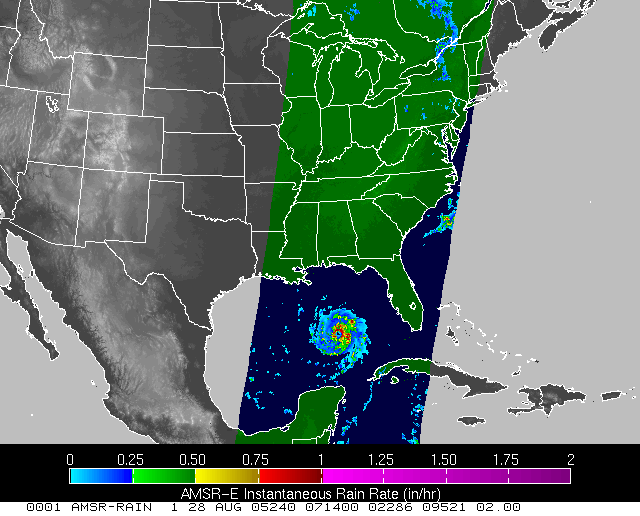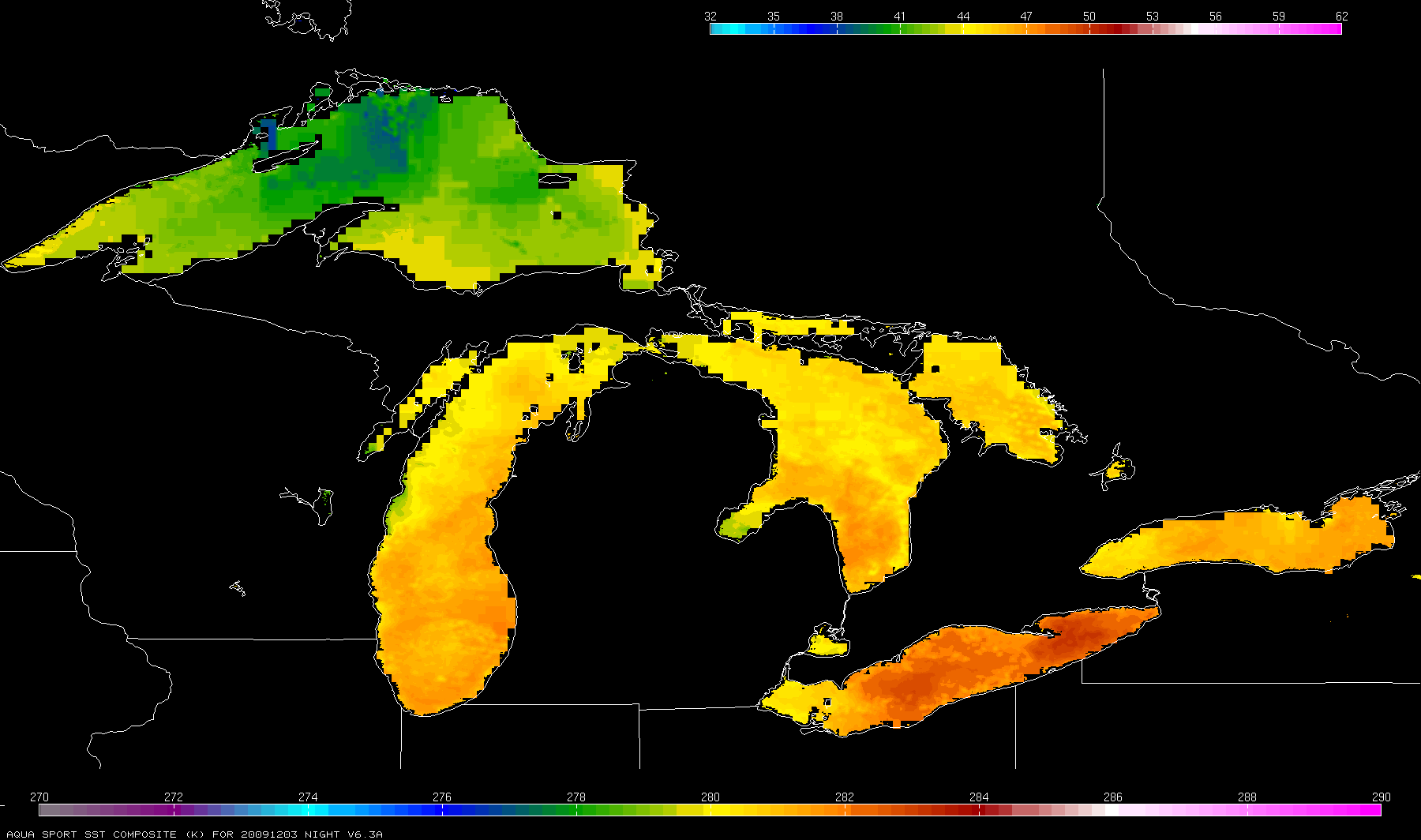LANCE AMSR-E: Land, Atmosphere Near real-time Capability for EOS AMSR-E
The Advanced Microwave Scanning Radiometer for Earth Observing Systems (AMSR-E) data processing system is a widely distributed set of computers and networks that process and pass data from the instrument, to ground stations, to the EOS (Earth Observing Systems) Data and Operations System (EDOS) at the Goddard Space Flight Center (GSFC), to the Japanese Aerospace Agency (JAXA), to the Physical Oceanography DAAC in Pasadena (PODAAC), to the Remote Sensing Systems (RSS) component of the Science Investigator-led Processing System (SIPS) in Santa Rosa, to the AMSR-E SIPS in Huntsville, and finally to the National Snow and Ice Data center (NSIDC) in Boulder. The SIPS team is funded to generate Level-2 and Level-3 climate research quality standard data products developed by the United States science teams. While generation of the half-orbit files is relatively fast (averaging between 8-12 hours post observation), there is a growing need to generate products within three hours or less to support various forecasting and natural disaster preparedness agencies around the world.
The Land, Atmosphere Near real-time Capability for EOS (LANCE) system was initiated to ensure the availability of NASA satellite data products to those partners who have grown to rely upon these data for their decision support systems and also to encourage the use of NASA technologies by new users. The LANCE system for AMSR-E was implemented using AMSR-E algorithms running at the National Oceanic and Atmospheric Administration Near Real Time Processing Effort (NOAA NRTPE). Redundant strings of equipment operate at The University of Alabama in Huntsville, which is co-located with the AMSR-E SIPS, the AMSR-E Science Computing Facility (SCF), and the Global Hydrology Resource Center (GHRC). The Information Technology and Systems Center (ITSC) has managed both the AMSR-E SIPS and the GHRC DAAC jointly with NASA/MSFC since the inception of each data system.








